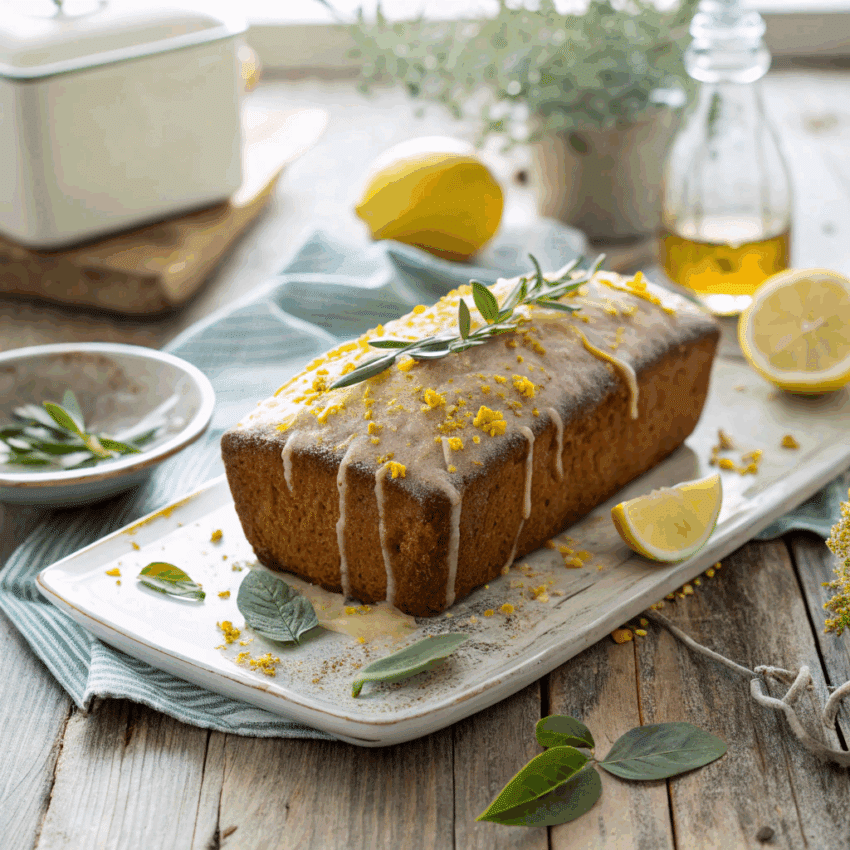I still remember the first time I added fresh sage to a dessert. I hesitated—sage was something I used for savory dishes, not sweets. But the soft earthiness of sage mixed with bright citrus made me stop in my tracks. It wasn’t overpowering. It was like adding a surprising twist to a familiar song. The combination of sage and lemon feels comforting, fresh, and a little adventurous, all at once.
That’s exactly what this sage and lemon pound cake delivers: a moist, tender loaf with an herby undertone and a zingy drizzle that wakes up your taste buds.
If you’ve been on the hunt for new herb recipes, this is one that feels approachable yet a little bold. It’s perfect for tea time, brunch, or even those nights when you crave a slice of cake with your evening tea.
Ingredients You’ll Need
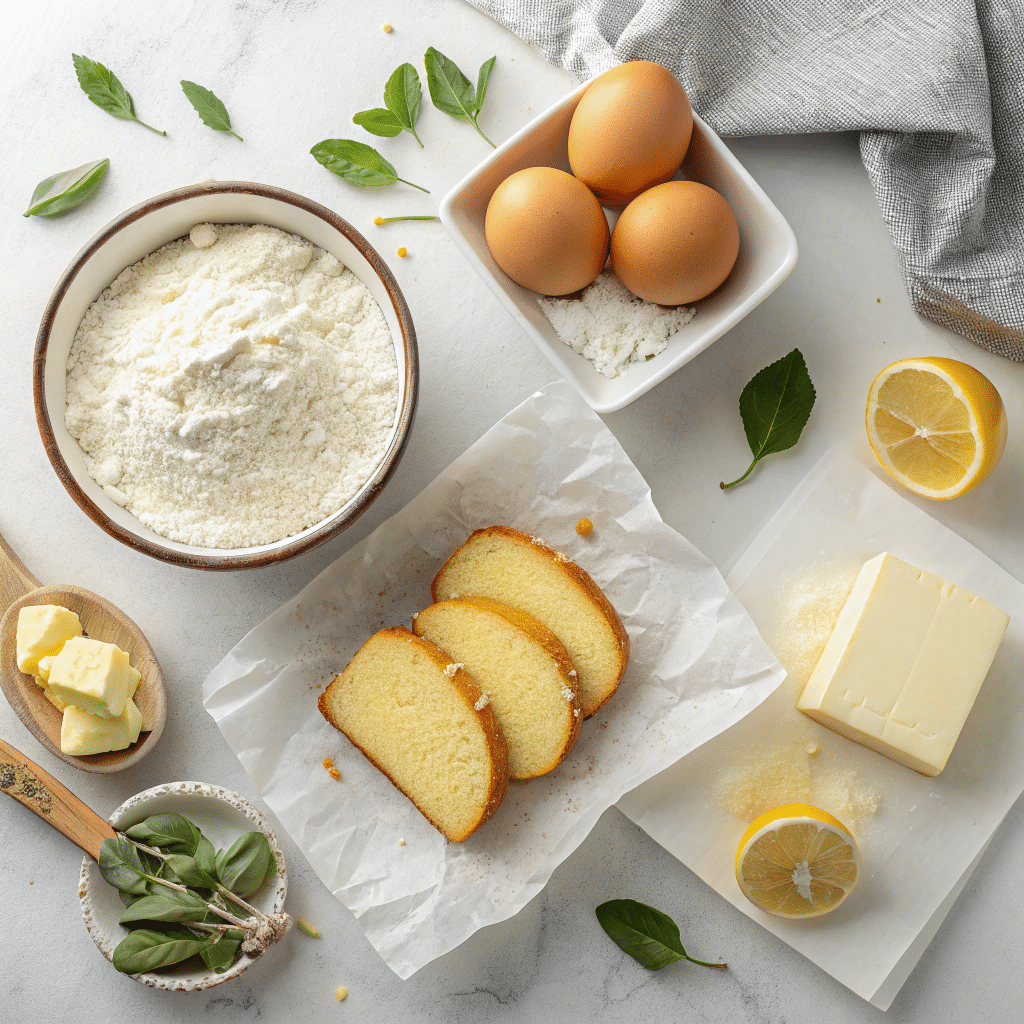
Before diving in, here’s your shopping list. Nothing fancy, just honest ingredients that work beautifully together.
For the cake:
- 1 cup unsalted butter, softened
- 1 ½ cups granulated sugar
- 4 large eggs, room temperature
- 2 cups all-purpose flour
- ½ teaspoon baking powder
- ¼ teaspoon salt
- Zest of 2 lemons
- ¼ cup fresh lemon juice
- 2 tablespoons fresh sage leaves, finely chopped
- ½ cup sour cream or plain yogurt
For the lemon drizzle:
- 1 cup powdered sugar
- 2–3 tablespoons fresh lemon juice
- 1 teaspoon finely chopped sage (optional, for garnish)
Step-by-Step Instructions
1. Prep the Basics
Preheat your oven to 350°F (175°C). Grease and line a loaf pan with parchment paper. This keeps your pound cake from sticking and makes cleanup easier.
2. Cream the Butter and Sugar
In a mixing bowl, beat butter and sugar until light and fluffy. It should look pale and airy. This step sets the stage for a moist lemon pound cake.
3. Add the Eggs
Crack in the eggs one at a time, mixing well after each. The batter will look silky and rich.
4. Fold in the Dry Ingredients
Whisk together flour, baking powder, and salt. Add this mixture into the wet ingredients gradually. Don’t rush. The flour should just disappear into the batter.
5. Flavor Boost
Mix in lemon zest, lemon juice, and chopped sage. These small additions bring big flavor. The zest gives the cake that refreshing punch, while sage balances everything with a gentle herbal note.
6. Sour Cream Magic
Stir in sour cream (or yogurt). This keeps the cake tender and adds a slight tang.
7. Bake to Perfection
Pour the batter into your prepared pan. Bake for 50–60 minutes, or until a toothpick inserted comes out clean. Your kitchen will smell like citrus sunshine mixed with a hint of garden freshness.
8. Add the Drizzle
While the cake cools, whisk together powdered sugar and lemon juice until smooth. Pour over the cooled cake, letting it drip down the sides. Sprinkle with a touch of sage if you’re feeling fancy.
What Makes This Cake Special
This isn’t your everyday lemon drizzle cake. The sage adds an aromatic layer you won’t forget. It’s one of those pound cake recipes that makes people ask, “What’s that flavor?”
If you’re used to classics like rosemary cake or basil cake, this one will feel familiar yet fresh. It’s a lovely way to highlight herbs in desserts without them taking over.
And let’s be honest—sometimes you want something that’s more exciting than plain lemon cake but not too experimental. This strikes that balance perfectly.
Tips for Success
- Fresh sage only. Dried sage is too strong and can make the cake bitter.
- Don’t skip the zest. Lemon zest holds the oils that give this cake its lively citrus kick.
- Room temperature ingredients matter. Cold butter or eggs can make the batter clumpy.
- Let it rest. Like most pound cakes, it tastes even better the next day.
Variations to Try
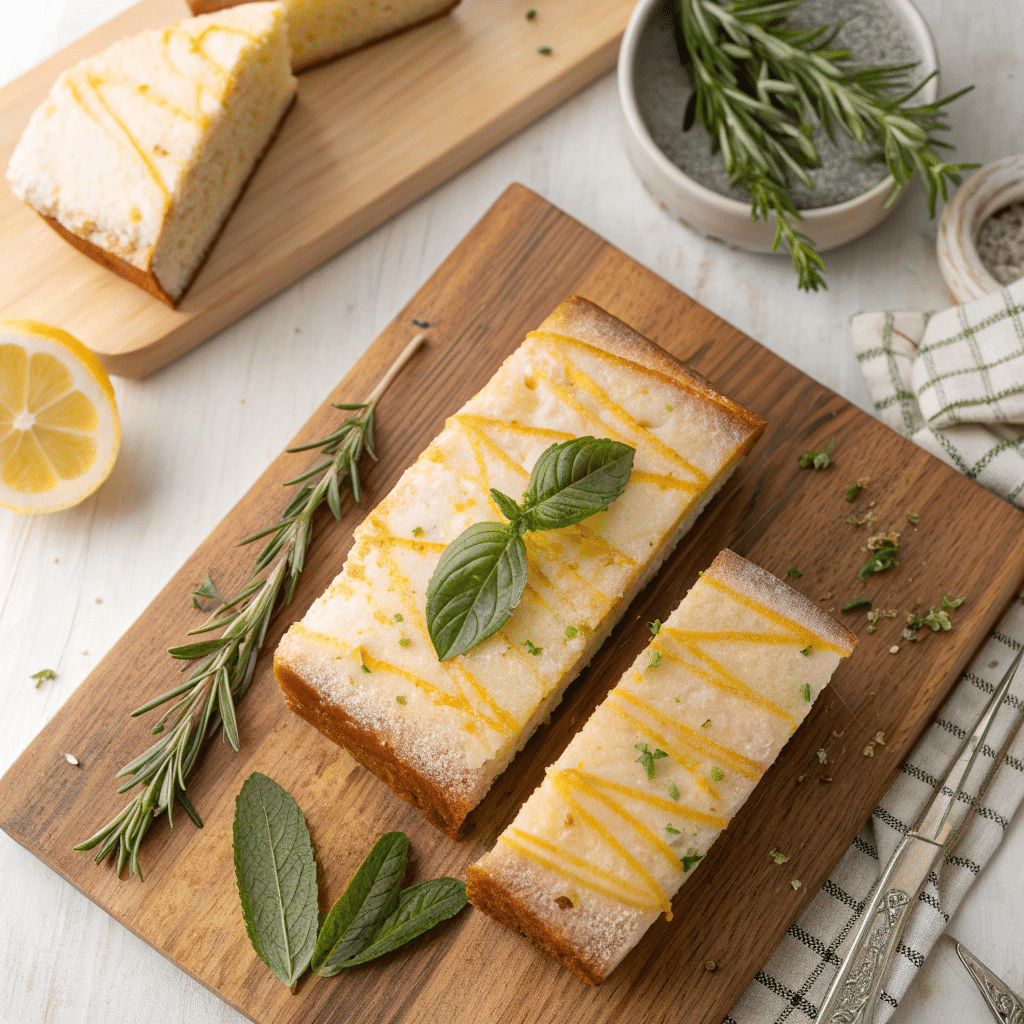
Want to play around with flavors? Here are some simple swaps:
- Swap sage with rosemary for a slightly pine-like flavor. Great for winter gatherings.
- Add basil instead of sage to create a basil cake with a lemon drizzle. It tastes lighter and more summery.
- Orange instead of lemon. Use orange zest and juice for a warmer, softer citrus profile.
- Glaze upgrade. Mix in a tablespoon of honey with the drizzle for a sweet-herbal note.
Serving Ideas
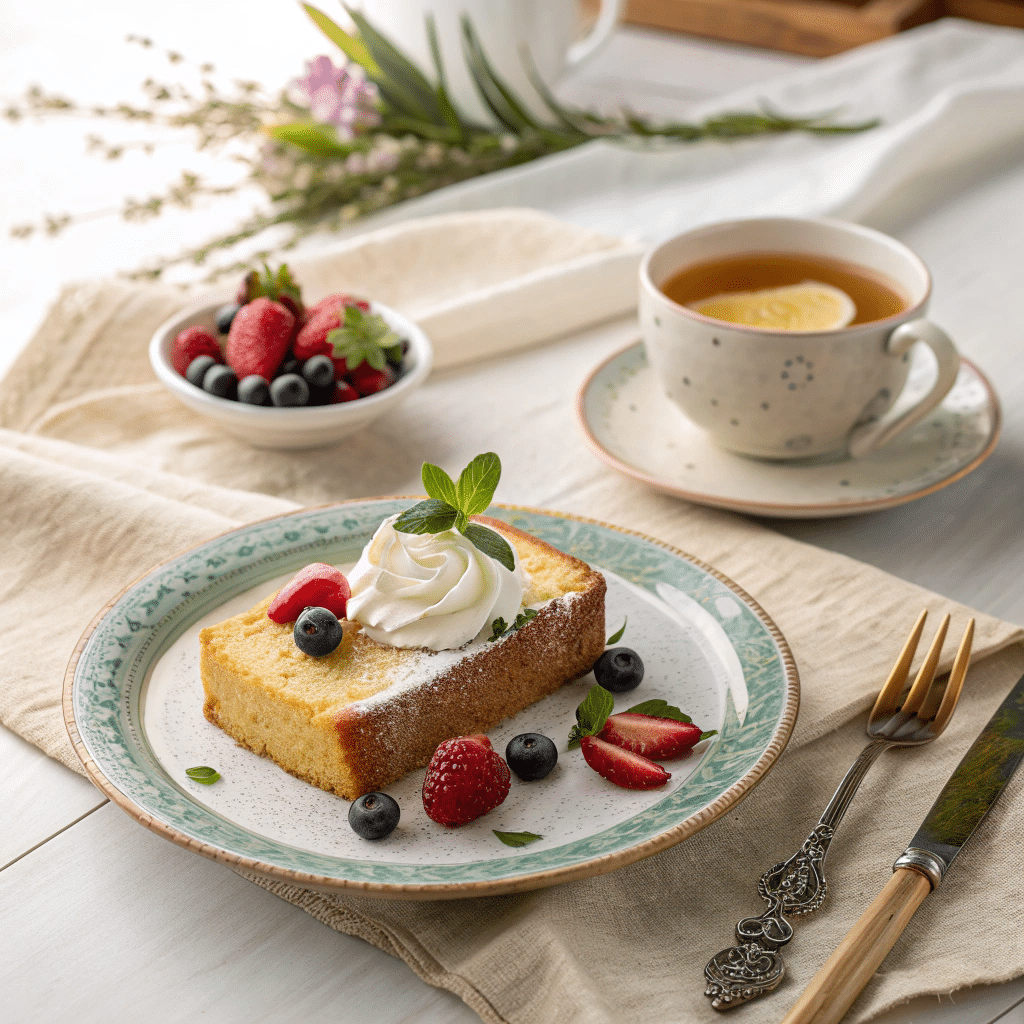
This sage and lemon pound cake isn’t just a loaf on a plate. Here’s how to enjoy it:
- Pair with hot tea or iced herbal tea.
- Serve alongside fresh berries for a brunch spread.
- Add a dollop of whipped cream for a simple dessert.
- Toast a slice lightly and spread with butter for breakfast.
Yes, cake for breakfast. I fully support it.
Storage
Wrap the cooled cake in plastic wrap or store in an airtight container. It stays moist for 3–4 days at room temperature. For longer storage, freeze individual slices and thaw as needed.
Why You’ll Love This Recipe
- Simple, familiar ingredients.
- A twist on traditional lemon pound cake.
- Moist texture that doesn’t dry out.
- Works for brunch, dessert, or tea-time snacking.
- Lets herbs shine in a sweet way.
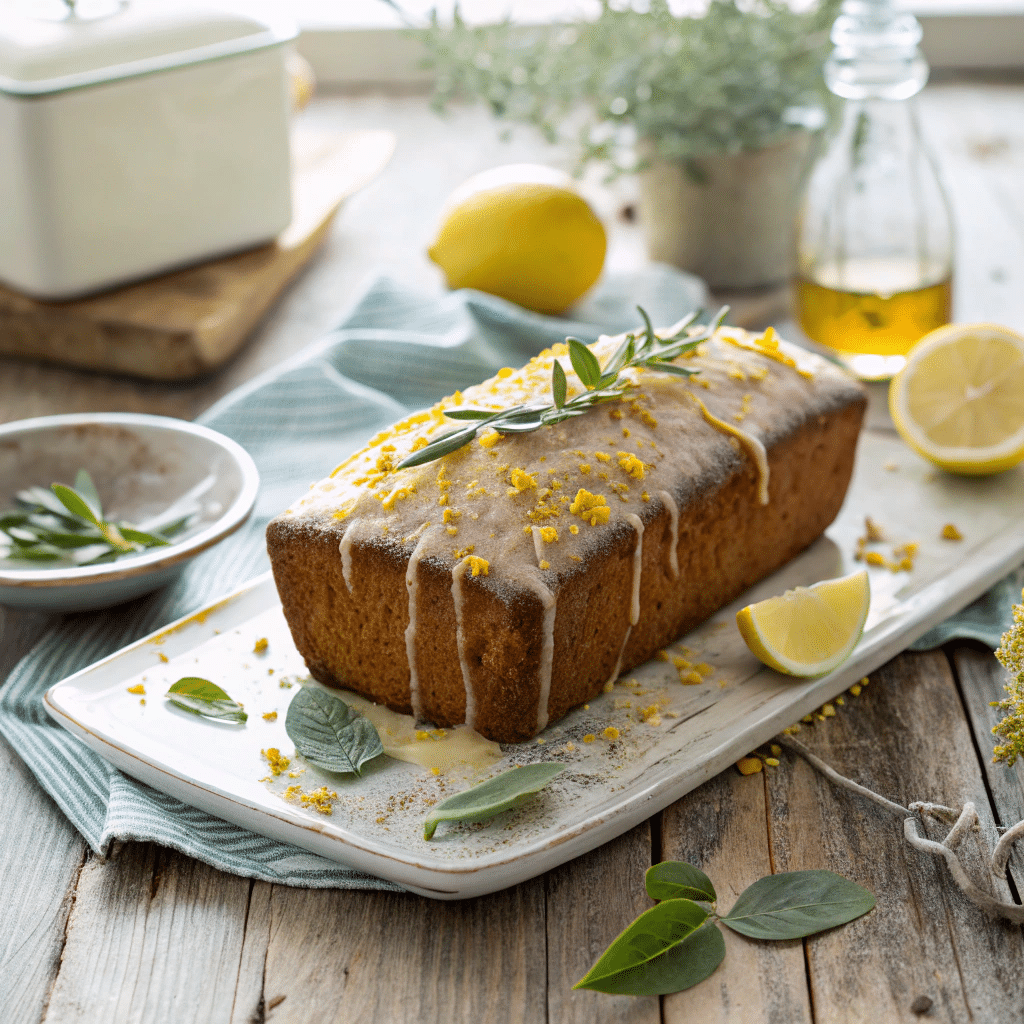
Sage and Lemon Pound Cake
Ingredients
Method
- Preheat oven to 350°F (175°C). Grease and line a loaf pan with parchment paper.
- In a large bowl, beat butter and sugar until light and fluffy.
- Add eggs one at a time, mixing well after each.
- In a separate bowl, whisk flour, baking powder, and salt.
- Gradually mix dry ingredients into the wet mixture.
- Stir in lemon zest, lemon juice, and chopped sage.
- Add sour cream (or yogurt) and gently fold until smooth.
- Pour into loaf pan and bake 50–60 minutes, or until a toothpick comes out clean.
- Let cake cool completely.
- Whisk powdered sugar and lemon juice until smooth. Drizzle over cooled cake. Garnish with a sprinkle of sage if desired.
Notes
- Always use fresh sage. Dried sage is too strong and can make the cake bitter.
- This cake tastes even better the next day when the flavors settle.
- Store leftovers wrapped tightly at room temperature for up to 3–4 days, or freeze slices for later.
FAQs
Q: Can I use dried sage instead of fresh?
A: I don’t recommend it. Dried sage is too concentrated and can overwhelm the lemon flavor.
Q: What pan works best for this recipe?
A: A standard loaf pan works perfectly. You could also use a bundt pan, but adjust the bake time.
Q: Can I make this cake dairy-free?
A: Yes. Substitute dairy-free butter and yogurt. It still bakes up moist and delicious.
Q: My drizzle is too runny. What went wrong?
A: You probably added too much lemon juice. Whisk in extra powdered sugar until it thickens.
Q: Does this recipe work with other herbs?
A: Absolutely. Rosemary, basil, or even thyme make wonderful variations.

